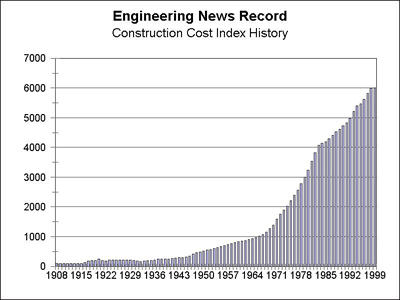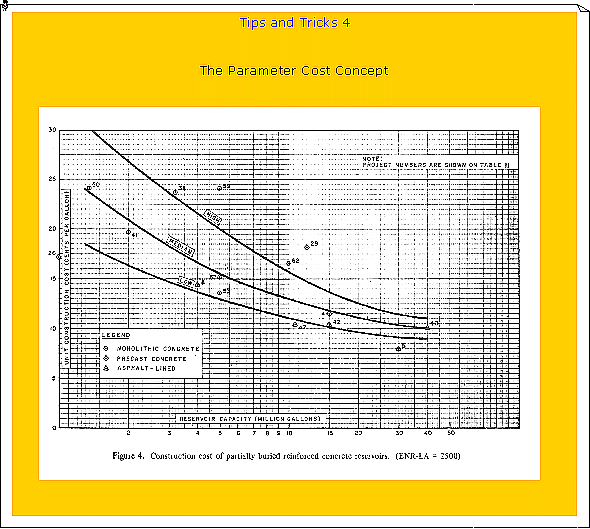
Technical Report Writing
CHAPTER
4 Data Gathering
A.
Summary
Data gathering is often more art than
science. In this Chapter we'll review some important but often overlooked data
sources, some unlikely data sources, the importance of the client or organization
as a source of data, and some pitfalls to avoid.
Also, the important concept of the "level
of detail" needed by each audience member will be addressed. As a final
reality check, always subject your data to common sense tests. Does this answer
really seem reasonable based on what you already know about the real world?
If it doesn't, look again!
B. Previous Reports/Literature Searches
The basic message here is "Don't
Re-invent The Wheel". Previous reports by your own organization and by
others are an important source of data and may save you days or months of work.
Always
find out if someone else has addressed the problem you are working on previously.
Get copies of earlier related reports. There are almost always some. Treat these
with caution though. They may contain errors or may be seriously out of date
or not precisely on target, but once you've satisfied yourself that some parts
of them provide reliable information, use them to the fullest extent possible.
One caveat = give credit where credit is due. Cite the previous reports fully
and thank their authors for doing some of your job for you. If you change the
data in any way, say so. It is unfair to others to change their data and subject
them to criticism for your possible errors.
C. Sources of Data
The data, i.e., the facts upon which
your report is based, will usually fall into one or more of the following categories:
·
Original Data
· Borrowed Data (Credit the Source)
·
Data provided by The Client
Original data from tests, measurements,
analyses, etc. are those facts you've developed under the most carefully controlled
and thought out conditions you can devise. Good empirical data results from
careful, meticulous work. Sloppiness will produce garbage and invite criticism.
You must be careful here however to balance time and cost against the ultimate
value of the data within the context of your technical problem. This is much
easier said than done, but ask yourself before you start how precise you need
to be. Would an error of 1 percent, 10 percent or even 100 percent make any
difference in the conclusions you draw from the data? Decide how much error
you can tolerate and still infer meaningful results.
Borrowed data is discussed above under
previous reports. If you have a choice, always use what appears to be the most
reliable data source for your report purposes. This is especially true when
you have several sources but the data from each differs somewhat. If the differences
are small, cite all the sources and average the data in some way. If the differences
are large, it is best to use the one source you feel the most confidence in
and explain in your report why you are making that choice. If you feel you must
include the other data sources, bury them in an appendix where hopefully no
one will find them.
Data provided by your client is often
problematical. You may at first feel that you have some "right" to
rely upon this data. Don't be fooled. Review this data as you would any other.
Is it complete? Is it accurate? Does it meet your reality checks?
For example, if your client tells you
that his water system provides 1 million gallons per day of water for each of
his 5,000 customers, do some simple math. This amounts to 200 gallons per person
per day. The national average is between 100 and 150. Numbers like these are
either in error or there must be some explanation for this high water use. Are
there major leaks in the system? Is there a large industrial water user such
as a cannery? Whatever the reason, you must find it and explain it and then
deal with it in your report.
In all data, including your own the
watchwords are:
·
Completeness
·
Accuracy
·
Reliability, i.e., reproducibility
·
Reasonableness (Reality Checking)
Some unlikely sources, which may at
first seem a joke to you, include the following commonly available books and
places:
The Public Library
City Hall
State and Federal Agencies
The Telephone Book
The Sears Roebuck Catalog
Hobby Clubs
Magazines in your field
Many writers of technical reports use these routinely for answers to sometimes
simple questions such as, what is the population of Arizona, or how much does
chain link fence cost, or how many sources of crushed rock might be available
to build this road?
Don't overlook these obvious sources.
The quality of the data is independent of the prestige of the source. A fact
is a fact.
D.
Inconsistent & Incomplete Data
When the data is inconsistent or incomplete
you need to decide early whether to try to salvage it, or dump it. Some very
crude data can be useful, if only for a first approximation, but measure the
time and effort you must spend to make sense out of data that doesn't at first
appear to make sense. If you decide to dump it, your early decision will help
you by possibly allowing you time to gather better data.
Incomplete data can often be "filled
in" by making reasonable assumptions about what happened during the periods
for which the data is missing. Be cautious here too. Remember that when you
do this you are, in effect, making up facts. Make absolutely certain that the
assumptions you make are reasonable and express them explicitly in your report.
Don't let somebody find out later that you made up data you didn't have. You
will appear foolish and possibly may be conceived as deceitful.
E. Levels of Detail and The Excess Perfection
Syndrome
Remember your audience? If not, this
is the place to be reminded of them. Each member of that audience has different
needs for the data in your report. Suppose you are writing a report on improvements
to the water system. The City Councilman may only need to know a few facts;
How much will it cost? When can it be done? How will it affect rates or taxes?
etc.
The Water Superintendent needs much
more detail. He may have a hundred questions such as; how much are annual chemical
costs going to have to increase ? What additional power requirements will your
plan entail ? Will additional staff be needed to operate the system ? Are added
tests required by the regulatory agency ?, etc.
There is one simple device for meeting
these widely varied needs for detail in your report.
Write the report moving from the general
to the specific.
As you discuss each topic in the report put the most important facts and conclusions first. These are, by definition, those facts and conclusions which every reader needs in order to understand your report and the problem it is written to solve. This topic will be revisited in Chapter 5, Report Organization, but it is mentioned here because it is one of the central ideas of good report writing.

Figure 4-1
D.
Summary: Why You Must Clearly Define Both Problems
Unless, and until, you have defined both the technical problems to be solved and the rhetorical reason you are writing the report you can't answer such questions as; what am I doing, why am I doing this, how am I going to do this, and how will I convince others that what I have done is worthwhile ?
****

****